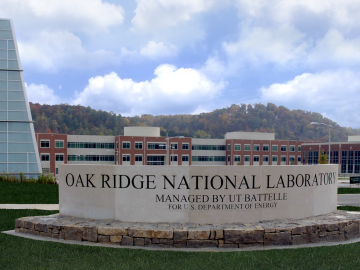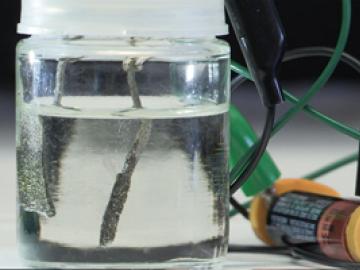Filter News
Area of Research
- (-) Computational Engineering (3)
- (-) Energy Frontier Research Centers (7)
- (-) Neutron Data Analysis and Visualization (4)
- Advanced Manufacturing (20)
- Biological Systems (3)
- Biology and Environment (134)
- Biology and Soft Matter (4)
- Building Technologies (9)
- Chemical and Engineering Materials (4)
- Chemistry and Physics at Interfaces (7)
- Clean Energy (320)
- Climate and Environmental Systems (11)
- Computational Biology (2)
- Computational Chemistry (5)
- Computer Science (13)
- Data (1)
- Earth Sciences (1)
- Electricity and Smart Grid (2)
- Energy Sciences (2)
- Fossil Energy (1)
- Fuel Cycle Science and Technology (2)
- Functional Materials for Energy (8)
- Fusion and Fission (36)
- Fusion Energy (15)
- Geographic Information Science and Technology (1)
- Isotope Development and Production (1)
- Isotopes (26)
- Materials (197)
- Materials for Computing (23)
- Materials Synthesis from Atoms to Systems (8)
- Materials Under Extremes (7)
- Mathematics (1)
- National Security (53)
- Neutron Science (107)
- Nuclear Science and Technology (45)
- Nuclear Systems Modeling, Simulation and Validation (2)
- Quantum Condensed Matter (3)
- Quantum information Science (7)
- Renewable Energy (4)
- Sensors and Controls (4)
- Supercomputing (194)
- Transportation Systems (6)
Media Contacts

Researchers at Oak Ridge National Laboratory have identified a statistical relationship between the growth of cities and the spread of paved surfaces like roads and sidewalks. These impervious surfaces impede the flow of water into the ground, affecting the water cycle and, by extension, the climate.

A study led by Oak Ridge National Laboratory explored the interface between the Department of Veterans Affairs’ healthcare data system and the data itself to detect the likelihood of errors and designed an auto-surveillance tool



From the bluebird painting propped against her office wall and the deer she mentions seeing outside her office window, Linda Lewis might be mistaken for a wildlife biologist at first glance. But rather than trailing animal tracks, Lewis, a researcher at the Department of Energy’s Oak Ridge National Laboratory, is more interested in marks left behind by humans.

With more than 30 patents, James Klett is no stranger to success, but perhaps the Oak Ridge National Laboratory researcher’s most noteworthy achievement didn’t start out so hot – or so it seemed at the time.

Andrew Stack, a geochemist at the Department of Energy’s Oak Ridge National Laboratory, advances understanding of the dynamics of minerals underground.







